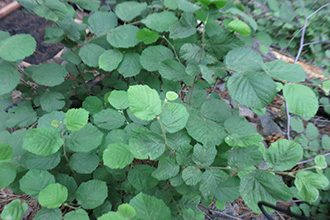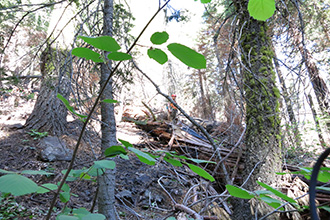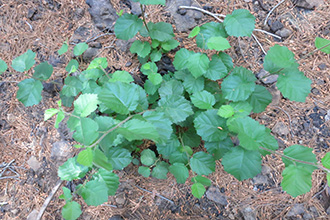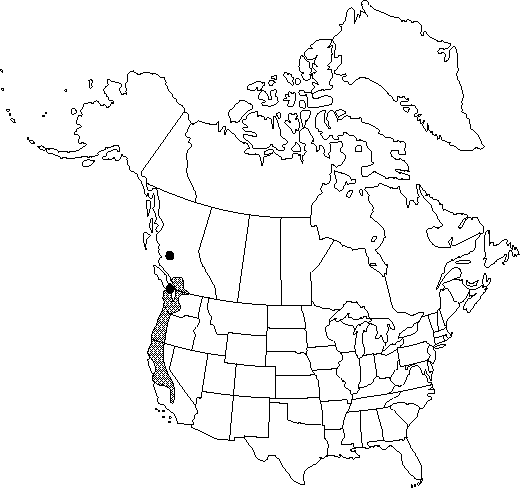Taxonomy: Kingdom - Plantae (plants). Subkingdom - Tracheobionta (vascular plants). Superdivision - Spermatophyta (seed plants). Division - Magnoliophyta (flowering plants). Class - Magnoliopsida (dicotyledons). Subclass - Hamamelididae. Order - Fagales. Family - Betulaceae (birch). Genus - Corylus L. Species - Corylus cornuta Marshall. Variety - Corylus cornuta subsp. californica (A. de Candolle) E. Murray.
Ecology: California hazelnut may persist into late succession, although it is more common in seral communities. In the Willamette Valley, California hazelnut grows in late-successional Oregon white oak/California hazelnut-poison-oak-Saskatoon serviceberry (Toxicodendron diversilobum - Amelanchier alnifolia) communities where fire has been excluded for 140+ years. California hazelnut may be important in gap succession in mature and old-growth Douglas-fir forests. This subspecies is most common on mesic and/or lightly shaded sites. It is grows on wooded hillsides and streambanks and in coves and canyons. California hazelnut is not as well adapted to cold sites as beaked hazelnut (Corylus cornuta subsp. cornuta). In British Columbia, where California hazelnut is at the edge of its northern range, it occurs only on sheltered sites in the rain shadow of the Coast Ranges.



